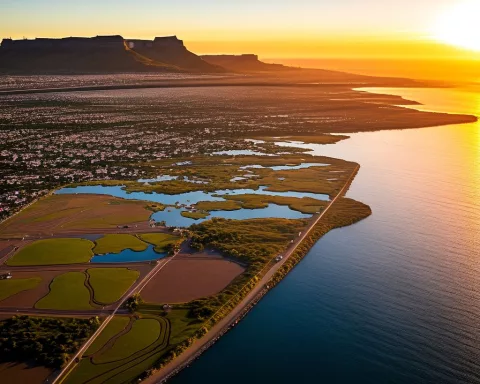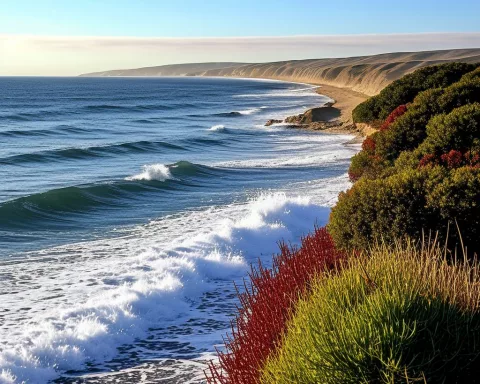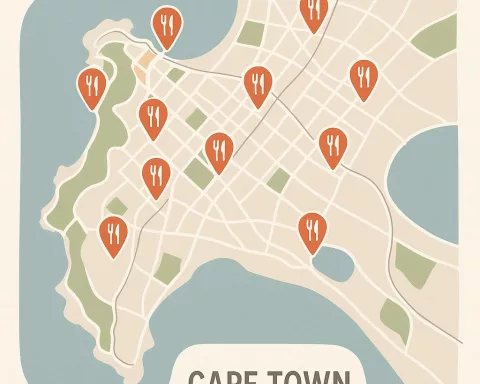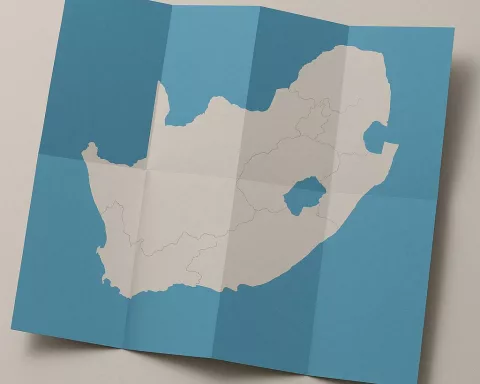The Botmaskop Fynbos Estate, a fancy housing project in Stellenbosch, is facing a big fight over its impact on the environment. The Stellenbosch Interest Group (SIG) is challenging the project, saying it was approved without enough public input and threatens the beautiful natural surroundings. As construction moves forward, SIG is asking the court to pause the project until its legality is assessed, fearing that once built, it will harm the area’s unique beauty for good. The developers, on the other hand, argue that stopping the project now would lead to serious financial problems. This clash highlights the tough balance between luxury development and protecting the environment, raising important questions about how we value and care for our landscapes.
What is the controversy surrounding Botmaskop Fynbos Estate?
The Botmaskop Fynbos Estate controversy centers on a luxurious housing project in Stellenbosch that faces legal challenges from the Stellenbosch Interest Group (SIG). They argue the project’s approval lacked public engagement and threatens the environment, highlighting the delicate balance between development and conservation in the region.
The Spark of Controversy
On the serene mountain slopes above Helshoogte Pass near Stellenbosch, a luxurious housing project known as Botmaskop Fynbos Estate has ignited a fierce legal and environmental debate. Nestled within the Western Cape’s verdant hills and expansive vineyards, this R300-million venture aims to offer affluent buyers a unique fusion of elegance and nature. Yet, as is often the case with such ambitious developments, it has drawn significant scrutiny regarding its ecological footprint and societal repercussions.
At the core of this controversy is the Stellenbosch Interest Group (SIG), an organization with a long-standing mission to safeguard the region’s natural and cultural legacy. Since its inception in 1996, SIG has championed the cause of protecting Stellenbosch’s distinct environment, which serves as both an ecological treasure and a vital component of South Africa’s cultural tapestry. The group has launched legal action against the estate, driven by the belief that the development poses a threat to the mountain’s ecological integrity and limits public enjoyment of its picturesque vistas.
The crux of the dispute revolves around the estate’s approval process, which SIG argues lacked meaningful public engagement. According to the group, this oversight violates environmental statutes and infringes upon citizens’ constitutional rights to participate in environmental decision-making. SIG contends that the February 2021 approval is illegitimate as it dismissed the community’s input, potentially undermining the democratic ideals embedded in South Africa’s constitution.
Legal and Environmental Stakes
In this high-stakes legal confrontation, SIG is seeking an interim court order to temporarily halt construction while the legality of the project’s approvals is assessed. Their urgency stems from the concern that if construction progresses unchecked, the estate will become a fait accompli, nullifying any future legal victories and causing irreversible environmental harm. SIG underscores the historical and scenic value of the area, describing it as a Grade II cultural and scenic route whose beauty and heritage would be compromised by extensive development.
Conversely, the developers of Botmaskop Fynbos Estate argue that the project is too far along to be stopped without dire financial consequences. By November of the prior year, substantial progress had been made with infrastructure such as roads, water, and sewerage systems already in place. Additionally, 29 out of the planned 77 plots had been sold, with prices spanning from under R8-million to over R36-million. They assert that halting the project now would lead to financial ruin and hinder future sales, compromising their ability to fulfill financial commitments.
The developers stand firm in their dedication to the project, emphasizing their significant monetary investment and claiming that the land has already undergone “material transformation,” suggesting that any environmental damage has already occurred. They posit that SIG’s objections come too late in the process, as the metaphorical horse has already bolted. The developers argue that SIG had ample opportunities to express their concerns earlier, and pursuing legal action at this stage jeopardizes the project’s feasibility and future prospects.
Broader Implications and Global Context
This dispute transcends local boundaries, resonating with global conversations about development and conservation, especially in regions where natural splendor and economic prospects intersect. Stellenbosch, celebrated for its vineyards and cultural richness, embodies this delicate dance between progress and preservation. The Botmaskop case presents pivotal questions about managing this balance when economic objectives clash with environmental concerns.
Historically, Stellenbosch has witnessed the tug-of-war between development and conservation. Its storied vineyards, some dating back centuries, illustrate a harmonious coexistence between people and nature. However, as urban pressures escalate and the allure of luxury developments grows, maintaining this balance becomes increasingly intricate. Thus, the Botmaskop development transcends its local significance, symbolizing the global challenge of sustainable growth amidst economic pressures.
As the courts deliberate the case, the unfolding drama in Stellenbosch serves as a poignant reminder of the complex relationship between humanity and the environment. It spurs reflections on how communities value their landscapes, envision their futures, and the importance of integrating diverse perspectives in development decisions. This situation underscores the necessity for transparent and inclusive processes in land-use decisions, ensuring that progress does not come at the expense of irreplaceable environmental and cultural assets.
Looking Toward the Future
As the court’s decision looms, its implications for the region will likely reverberate for years to come. The outcome will be scrutinized as either a cautionary tale of unbridled development or a victory for community activism and environmental stewardship. Regardless of the verdict, the case of Botmaskop Fynbos Estate is a compelling example of the challenges and opportunities inherent in reconciling development with the preservation of the natural world.
In the broader narrative of Stellenbosch, the Botmaskop controversy may ultimately serve as a critical juncture. It offers a lens through which we can examine the ongoing dialogue between economic progress and environmental preservation, urging us to consider how these forces can coexist in a way that honors both the land and its people. As stakeholders await the court’s ruling, the discussion surrounding Botmaskop Fynbos Estate underscores the need for thoughtful and balanced approaches to development, reflecting a shared responsibility to protect and cherish our natural heritage for future generations.
FAQ: Botmaskop Fynbos Estate Controversy
What is the Botmaskop Fynbos Estate project?
The Botmaskop Fynbos Estate is a luxury housing development located in Stellenbosch, South Africa, valued at R300 million. It aims to offer affluent buyers a combination of elegance and nature within the scenic Western Cape region.
Why is the Stellenbosch Interest Group (SIG) opposing the project?
The Stellenbosch Interest Group (SIG) is contesting the project due to concerns that its approval lacked sufficient public engagement and threatens the delicate natural environment and cultural heritage of the area. They argue that the development compromises the ecological integrity and scenic beauty of the mountain slopes.
What legal actions are being taken against the Botmaskop Fynbos Estate?
SIG has initiated legal proceedings to seek an interim court order that would halt construction temporarily while the legality of the project’s approvals is assessed. They are concerned that if construction continues unchecked, it will render future legal victories ineffective and cause irreversible environmental damage.
What are the developers’ arguments in favor of the project?
The developers assert that the project is too far along to be halted without incurring significant financial risks. They highlight that infrastructure work has already been completed and that plots have been sold at prices ranging from under R8 million to over R36 million. They argue that SIG’s objections come too late and that halting the project could jeopardize their financial commitments.
How does this controversy relate to broader environmental issues?
The situation surrounding the Botmaskop Fynbos Estate reflects global challenges in balancing development and conservation. It highlights the ongoing struggle in many regions to reconcile economic growth with environmental protection, particularly in areas renowned for their natural beauty and cultural significance.
What are the potential implications of the court’s decision on the project?
The court’s ruling on this matter will have significant ramifications for both the local community and future development projects. A decision to halt the construction could be seen as a victory for environmental stewardship, while allowing the project to proceed may signal an endorsement of luxury development without public input. The outcome will likely influence future discussions on sustainable development practices in Stellenbosch and beyond.












